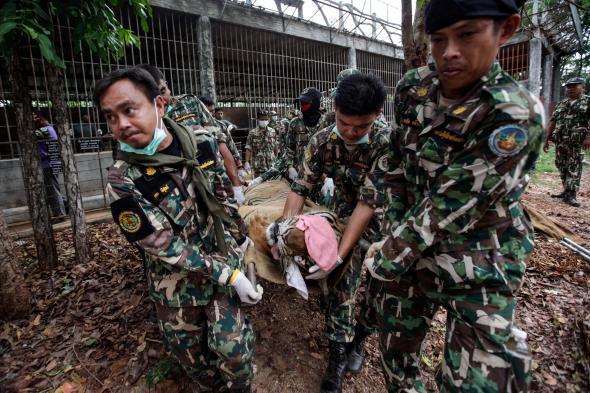A controversial Buddhist monastery in Thailand is under investigation after wildlife authorities discovered 40 dead tiger cubs in a freezer on Wednesday. The Tiger Temple has long been accused of abuse by conservationists; the monastery charges tourists a fee for close encounters with the tigers at the temple.
Local police told Agence France-Presse that the tigers appeared to be only days old when they died; only one of the tigers was lawfully registered with the Thai government. “Tiger parts, while illegal to sell, are in high demand in Asia, particularly China, for use in traditional medicine,” according to the New York Times. “There is even a market for frozen tiger cubs, as the arrest last month of a Vietnamese man carrying four of them attests.”
The discovery, which was made while officials were removing adult tigers from the premises, reignited a long-simmering dispute between the government and the monastery. Here’s more from AFP:
Wildlife officials say the whole complex is illegal and have battled the monks for years to try and close it down. The dispute has been complicated by the fact that secular Thai authorities are often reluctant to intervene in the affairs of the clergy… Animals rights groups have accused the temple of complicity in the hugely lucrative black-market wildlife trade, making tens of thousands of dollars by selling off older cats and animal parts for use in Chinese medicine. Last year one of the temple vets turned whistleblower, handing authorities three microchips he said were inside a trio of tigers who had disappeared. It has never been fully established what happened to those tigers.
“Representatives of the temple [-] said that Thailand’s Wildlife Conservation Office had been notified of all of the cubs’ births and deaths and that the bodies were kept as proof that none of them were sold on the black market,” according to the Times.
